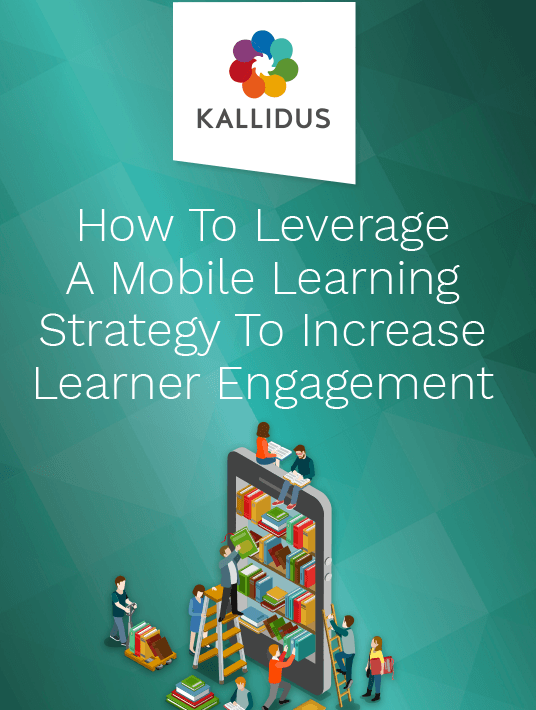How To Use A Mobile-Friendly LMS To Boost Learner Engagement
There has been a lot of buzz in L&D over the last few years about the powerful impact of mobile on learning engagement. From flexibility to changing the workplace learning culture, implementing mobile learning is fast becoming a goal for organisations of all sizes. However, introducing mobile learning alone is not enough. This is where both strategy and a solid mobile-friendly LMS come into play. There is a wide variety of ways you can harness the power of mobile learning through a new strategy and using an LMS that can make the most of these changes should be top of your list. Here are just a few ways a mobile-friendly LMS can take your learning engagement to the next level.

A Handheld Centre For Learning
One of the primary goals for any LMS is to provide a central base for learning in the workplace. Increasing learner engagement, however, is about so much more than completion rates and so much bigger than compulsory and compliance training. Providing learning on the go in the form of a mobile-friendly LMS allows your workforce to develop a more consistent learning experience anytime, anywhere. Websites like Google and YouTube are used increasingly as a base for learning among the modern workforce. Whether they’re teaching themselves to code or how to cook a new dish from scratch, it is becoming more and more common for modern workers to learn continuously. By using a mobile-friendly LMS, stocked with a wide range of content, you can encourage your employees to use your system as the centre for their learning, regardless of how they wish to branch out.
Encourage Collaboration In Its Natural Environment
The age of social media means that much of your workforce will be used to collaborating on a daily basis, whether through comments, curated content, artwork, or sharing thoughts online. The use of social media is inherently creative and full of collaboration – two vital components of increasing learning engagement. Collaborative learning is huge in the world of L&D right now, and it’s easy to see why. Putting your learners at the heart of their learning experience is a great way to boost active participation and enthusiasm for training and development. Ensuring your LMS is mobile-friendly allows you to meet your learners where they already are – sharing and socialising on mobile devices. With the increase in User Generated Content (UGC) features in modern LMSs, mobile is a great step up the learning engagement ladder.
Allow Your Employees To Learn On Their Own Schedules
One of the best things about mobile learning is flexibility. It allows your workforce to fit their learning into their day in a way that suits them. For example, if they have a long commute to the office or are heading out to a meeting if curiosity strikes, they can invest some time in their personal development. The ability and space to do this mean an increasing amount to the modern workforce, with career progression and opportunities for development among the top reasons to employee happiness. It’s important to remember as well that mobile-friendly doesn’t mean mobile-only. By implementing a mobile-friendly LMS, you are simply providing your workforce with more options, not taking more traditional or desktop-based learning away from them. Just as flexibility with working arrangements is important for employee retention, flexibility with training is important for learning engagement.
Give Them What They Need To Know When They Need To Know It
Point-of-need and on-demand learning are up there with the best benefits of using a mobile-friendly LMS. Not only can they come with significant benefits for your organisation as a whole (including better-trained workforce, increased morale, and decreased spending on training), but it also empowers your employees to be more self-driven in their learning. Mobile-friendly is the only way to truly achieve this flexibility. Whether your workforce is on the road with their phone in their pocket or works in the field with a company-supplied tablet, point-of-need training is proven to increase learning engagement and create a happier, more empowered workforce. Generating a culture of continuous and self-driven learning is a dream for many who work in Learning and Development, but investing in a mobile-friendly LMS as part of your ongoing learning strategy is a fantastic way to move this culture in the right direction.
Conclusion
If you’re looking to embark on a mobile learning revolution within your organisation, a mobile-friendly LMS should be high on your priority list. It may seem self-explanatory, but implementing this technology can go a long way to boosting your learning engagement. The average modern worker spends more and more time on their mobile devices, so it’s time to follow the bright spots and move to where your employees already are. This doesn’t mean taking over their lives or bombarding them with notifications, simply integrating the learning experience at work with their learning experience in everyday life. Modern workers are often more engaged when they feel they have more control, and mobile learning is a fantastic way to empower them to learn when, where, and how it suits them.
In case you are looking to further educate yourself on the value of mobile learning, then download the eBook How To Leverage A Mobile Learning Strategy To Increase Learner Engagement to learn how collaboration, microlearning, strategy development and a transformation to mobile learning can enable you to really boost engagement.







